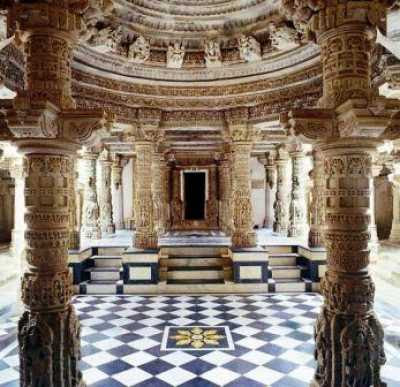

Travel to Mount Abu, that has been a haven for saints and sages, from the time one can trace it. Legend has it that all the 330 million gods and goddesses of the Hindu mythology used to visit this holy hill. It is also the place where the great saint Vashishth performed a yagna (sacrificial worship on a fire pit) to create four Agnikula (four clans of fire) to protect the earth from Parasurama. Believed to be an incarnation of Lord Vishnu, Parasurama, wiped out the kshatriya (warrior) caste 21 times to avenge the death of his father. The yagna was supposed to have been performed near a natural spring, which emerged from a rock shaped like a cow's head.
According to another legend, once sage Vashishth's cow Nandini fell in lake. The sage appealed to Lord Shiva for assistance. The Lord then sent the youngest son of Himalaya, the king of mountains to save her. This he did with the assistance of Arbud, the celestial cobra, who brought a huge rock on his hood. The spot where the rock was dropped came to be known as Mount Arbud and was later changed to its present form - Mount Abu, the famous hill station of Rajasthan.
Fruits of Jain Architecture
The pièce de résistance is apparantly the stunning array of Dilwara Jain Temples from the 11th-13th centuries and dedicated to the Jain Tirthankaras. The hallmark of these Jain Temples (beside being one of the important pilgrimage destinations) is the cloudless translucent shell-like treatment of marble, the elegance and beauty of which can only be felt after seeing them. The architecture is marked by carvings that are not just ethereally beautiful in form but are often presented in a highly poetic context. For instance, look at one of those marble nayikas (maidens), carved on the walls of the sanctum, depicted as having just emerged from her bath. Droplets falling from her long hair are shown being drunk by a swan sitting at her feet. Mesmerizing, isn't it? Surely indeed these places of worship has given a new birth to marble architecture in Indian history. Each nook and corner of the Dilwara temples are so magnificently carved that it's a wonder that the effigy was created out of a single plain stone.
No comments:
Post a Comment